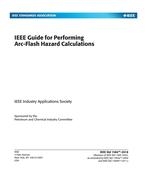
Features
Safety
IEEE publishes guide for arc-flash hazard calculations
January 2, 2019 | By Peter Saunders

January 2, 2019 – The Institute of Electrical and Electronics Engineers (IEEE) and its standards association (IEEE-SA) have published a new technical guide for performing arc-flash hazard calculations to help reduce burn injuries suffered by electricians due to equipment failure.
IEEE 1584-2018, Guide for Performing Arc-Flash Hazard Calculations, provides mathematical models for designers and facility operators to apply in determining arc-flash hazard distances. The standard is based on studies and laboratory testing conducted for the Arc Flash Research Project, an ongoing collaboration between IEEE and the National Fire Protection Association (NFPA).
“Our work has resulted in a standard that dramatically improves the prediction of hazards associated with arc faults and accompanying arc blasts,” says Konstantinos Karachalios, managing director of IEEE-SA. “Contractors and facility owners will be able to more thoroughly analyze power systems to calculate the incident energy to which their employees could be exposed during operations and maintenance work, allowing them to provide appropriate protection in accordance with the requirements of applicable electrical workplace safety standards.”
IEEE 1584-2018 includes processes covering the collection of field data, consideration of power system operating scenarios and calculation parameters. Applications include electrical equipment and conductors for three-phase alternating current (AC) voltages from 208 V to 15 kV.
The guide is available for purchase at the IEEE Standards Store.
Print this page